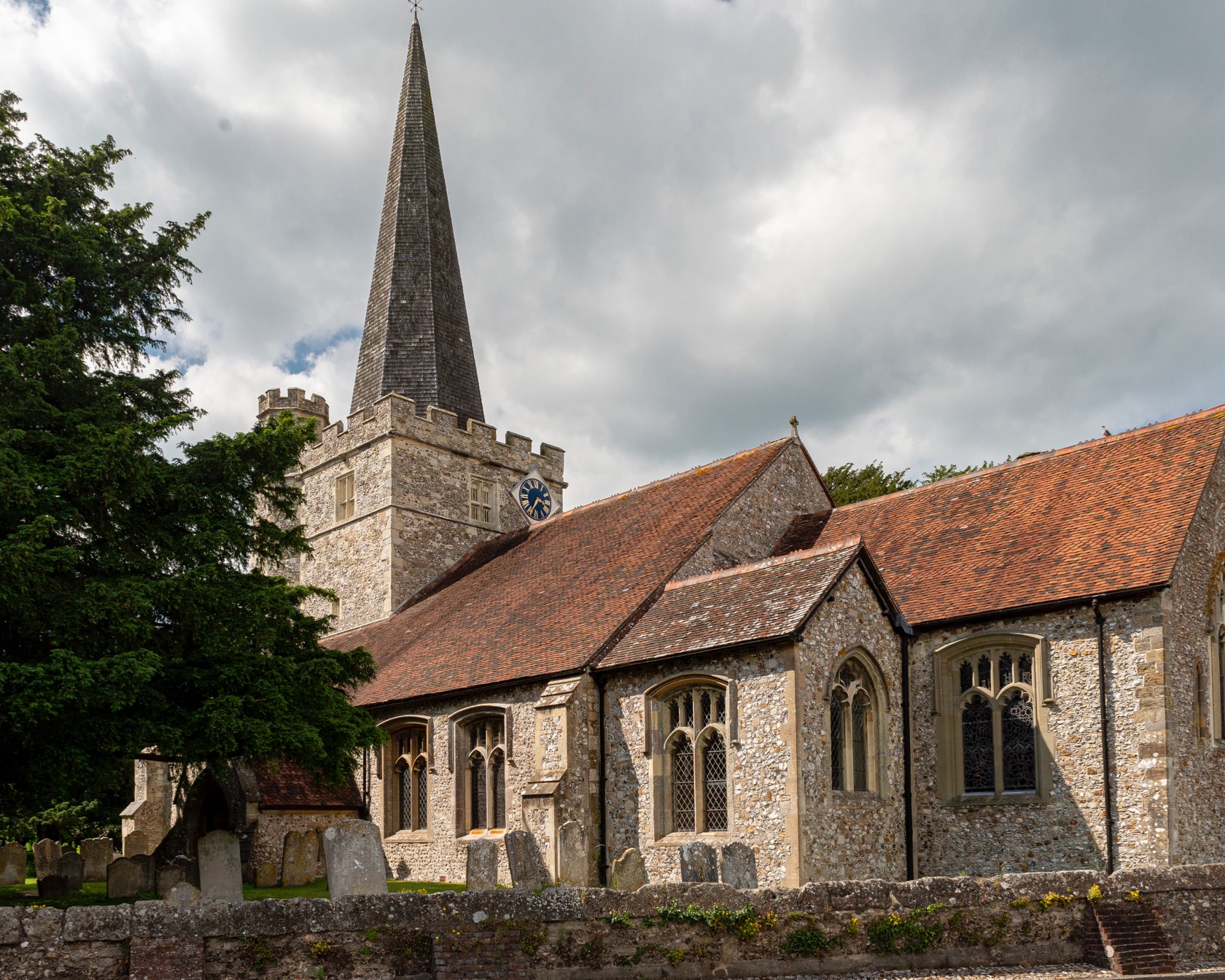The North Aisle
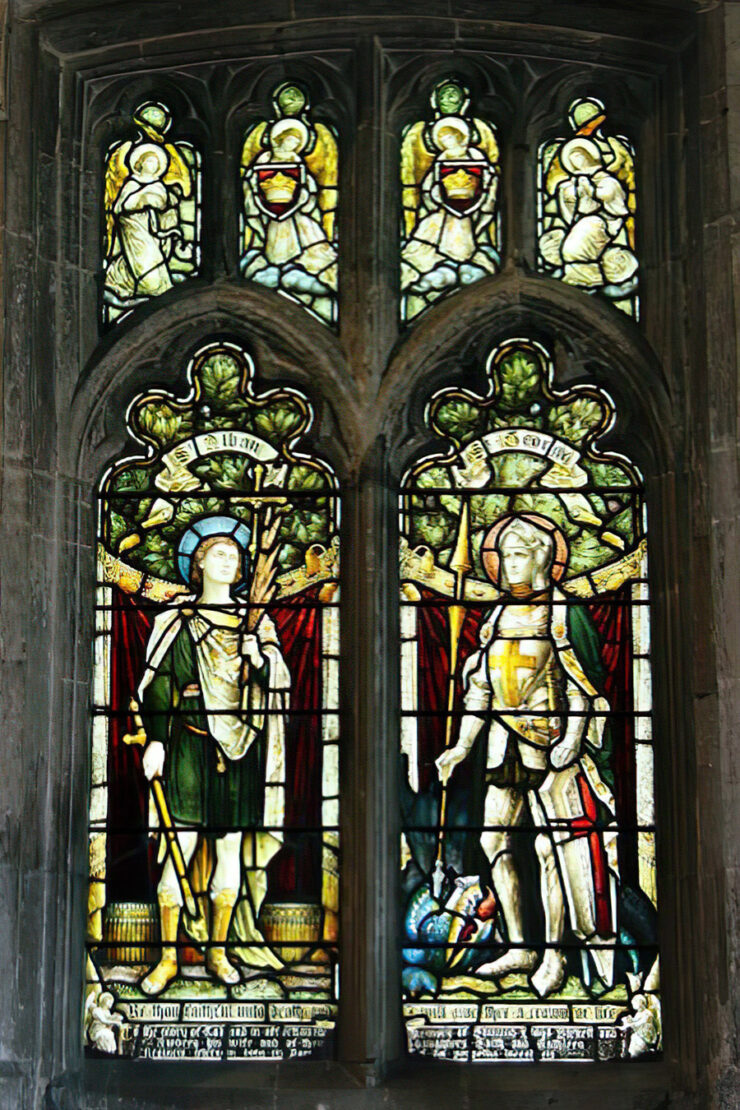
We start at the North door (the door which faces towards Church Road and the famous avenue of Yew trees) and we turn left. The first window has two figures of patriotic flavour, St Alban and St George. St Alban was the first British martyr. He was executed by the Romans for his Christian faith in about the year 305. His shrine is, of course, in St Alban’s Abbey. In our window he carries a sword, a cross and palms of glory.
Very little is known about the life of St George, though he may have been martyred not much later than St Alban. The slaying of a dragon was not credited to him until the 12th Century. He became the patron saint of England (in place of Edward the Confessor) probably in the reign of Edward the Third (1327-1377). In our window he is shown with shield and spear and the dragon at his feet.
As to this window in general, there is the text, ‘Be thou faithful until death and I will give thee a crown of life’ (Revelation 2:10). Each of the four small lights at the top contains an angel, two of whom bear a martyr’s crown.
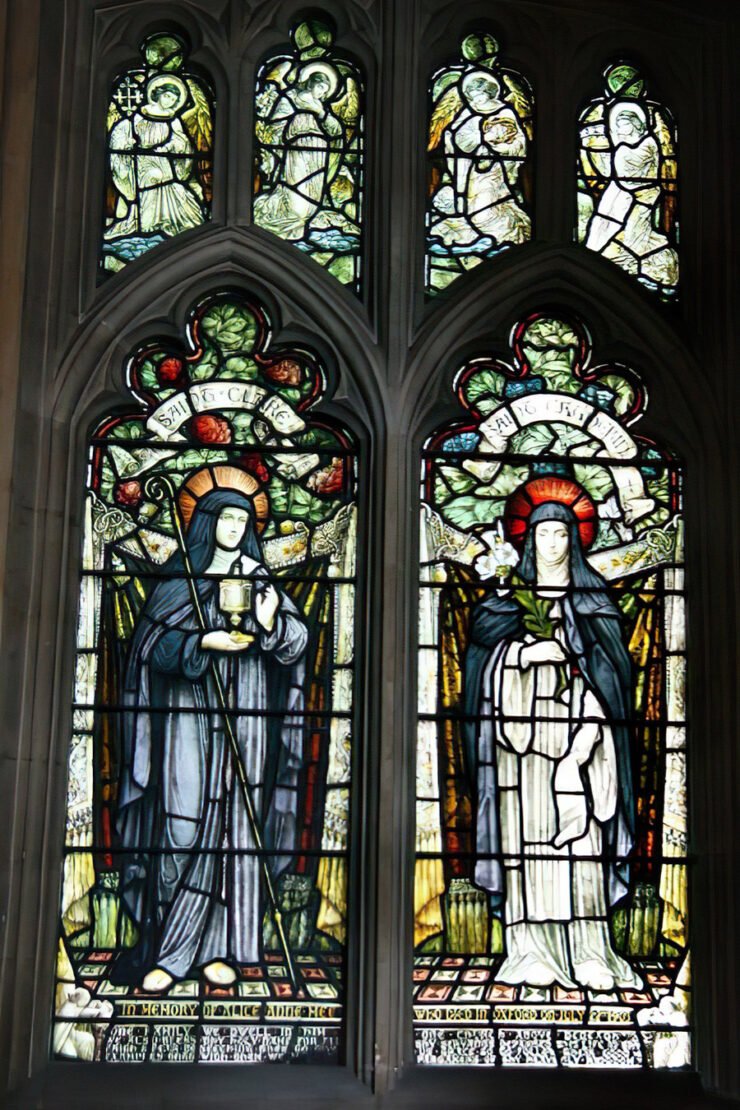
The second window in the North aisle has representations of two female saints. In the left-hand light is St Clare. Her dates are 1194-1253. She heard the teaching of St Francis of Assisi, gave up all her worldly possessions and joined him. From 1215 until her death she was the head of the female section of the Franciscan order. She was canonised in 1255. In our window she carries a crosier (symbol of an abbess) and a ciborium (the chalice-shaped vessel which contains the sacramental bread of the Eucharist).
The right-hand light poses rather a problem. The picture is of St Catherine. There are, however, at least five saints of that name. The best known is St Catherine of Alexandria. Tradition has it that she was tortured by being tied to a wheel (hence our Catherine wheels on Guy Fawkes’ day) and finally beheaded. But no wheel is shown in the Westbourne window. Our saint carries a lily, symbol of chastity and a scroll, symbol of learning. St Catherine of Alexandria is the patroness of young women and scholars. But the Westbourne saint could equally be St Catherine of Sienna. She lived in the 14th Century, a Dominican nun of great sanctity, who was canonised in 1461. It may be that in our window the Franciscan St Clare is balanced by the Dominican St Catherine of Sienna.
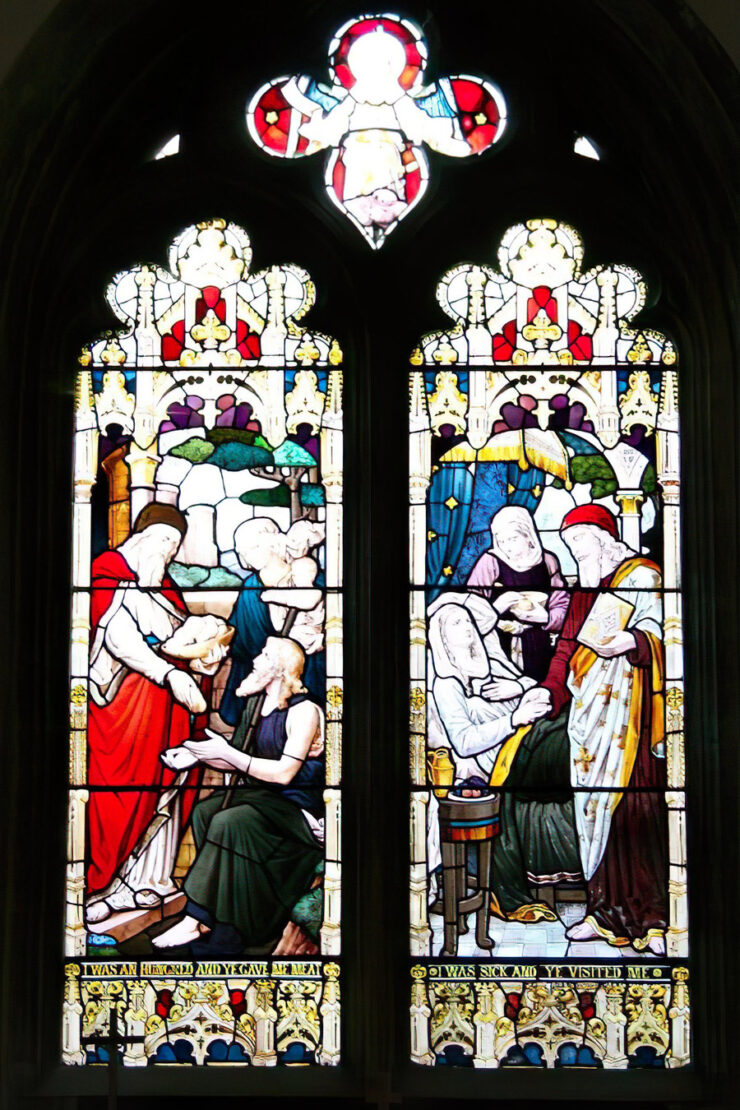
The window at the East end of the North aisle, behind the side altar, is devoted to acts of charity, with the text, ‘Blessed are the merciful’ (Matthew 5:7). On the left is a man distributing bread to a seated traveller who has a woman and child with him. Underneath are the words, ‘ I was an hungered and ye gave me meat’ (Matthew 25:35). On the right is a woman lying on a sick bed. Another woman is standing at one side carrying a bowl (presumably of food). A man stands holding the sick woman’s hand. He carries a book (perhaps a Bible). Underneath are the words, ‘I was sick and ye visited me’ (Matthew 25:36).
The Chancel
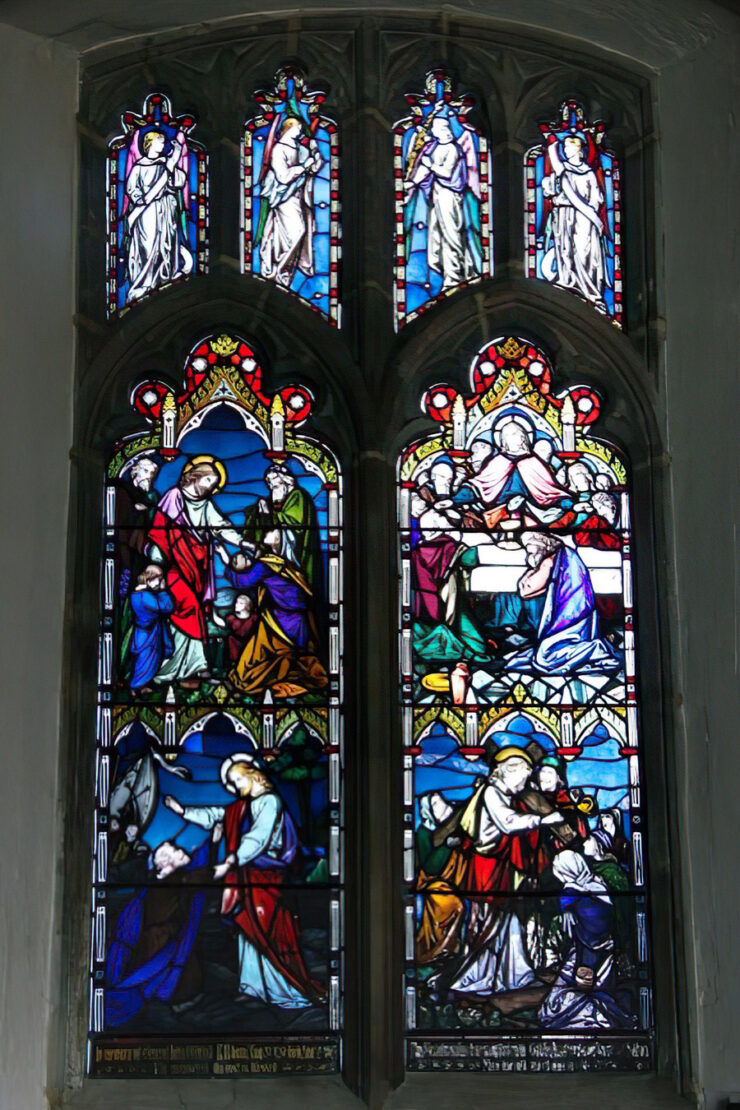
We move into the chancel and consider the first of two windows on the North side. This has four scenes from the life of Jesus. In one picture he is blessing the children around him. In the lower part, he is walking on the water and St Peter going to meet him. The third picture is of the Last Supper, and the fourth is of Jesus carrying his cross.
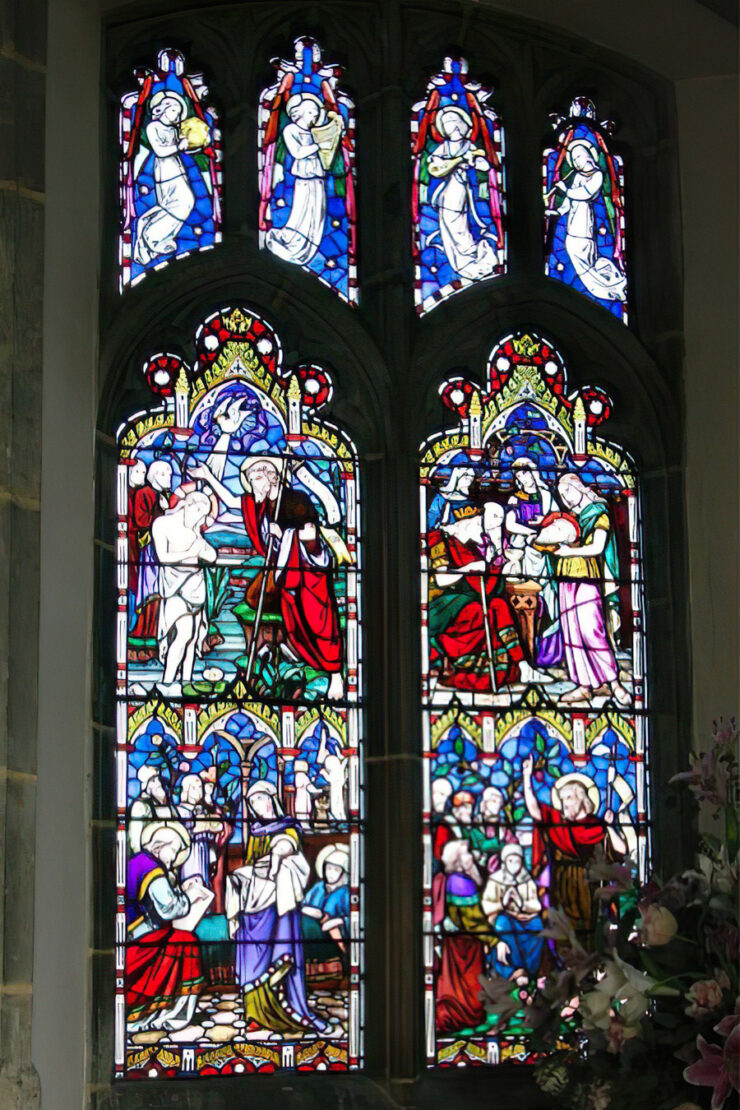
The window to the left of the high altar displays four scenes from the life and death of St John the Baptist, our patron saint. In one picture he is shown baptising Jesus in the River Jordan. In the next, John’s father, Zacharias, is depicted writing on a tablet what name should be given to his son, ‘He shall be called John’ (Luke 1:60). The third is a rather gruesome picture of John’s head on a plate after he had been beheaded at Herod’s command. And finally we see John preaching to the crowds who flocked to hear him.
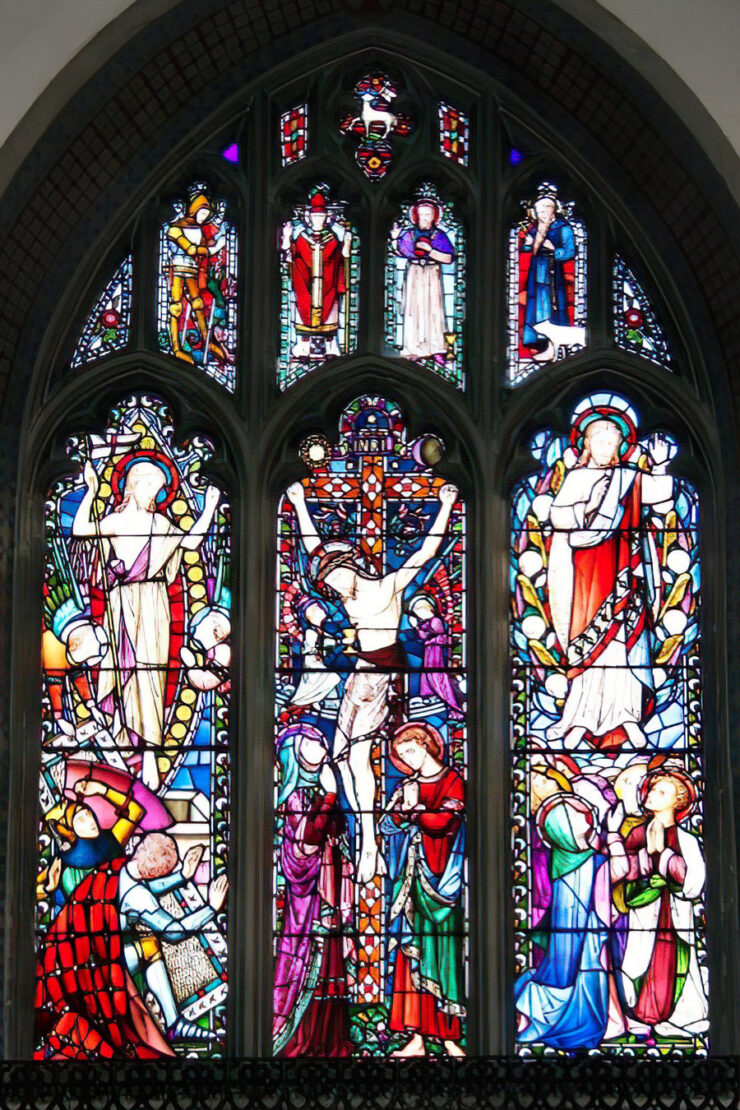
We come now to the East window, behind the high altar. It is concerned with the last days of the earthly life of Jesus, and quite rightly dominates the church.
The centre light portrays the Crucifixion. Jesus hangs on the cross, with Mary his mother on one side and St John on the other. There are two angels. The initials INRI are short for lesus Nazarenus Rex ludaeorum (Jesus of Nazareth, King of the Jews).
In the left-hand light we see the rising of Jesus from the dead with soldiers obviously terrified by the event. In the right-hand light Jesus is ascending into heaven, where angels are receiving him. The disciples are gazing upwards.
There are four small figures at the top of the window of St George (for the second time in this Church), St Thomas a Becket of Canterbury (?1118-1170), St Richard of Chichester (1197-1253) and St Anthony of Egypt (about 251-356). St Anthony has the emblems of a pig and a bell. He retired to the desert and lived the life of a hermit.
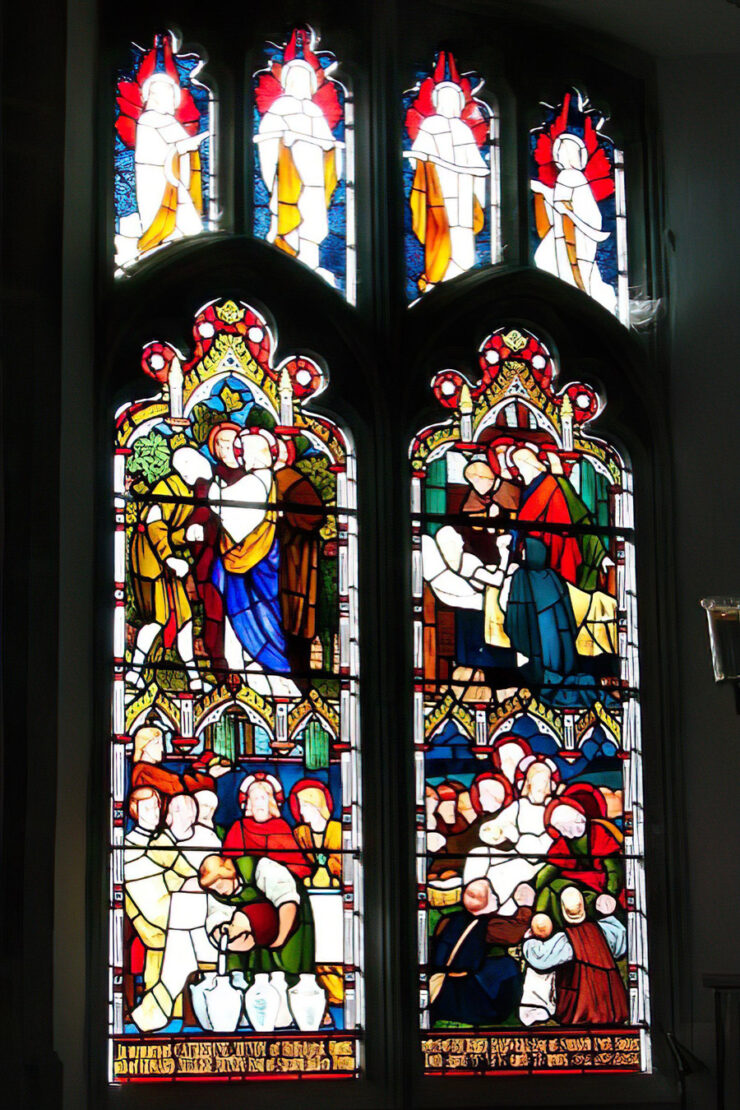
On the South side of the chancel is an interesting window with four scenes depicting miracles of Jesus. To the left is the healing of a blind man (John 9) and the turning of water into wine (John 2:1-11).
The right-hand light shows the raising of Jairus’ daughter (Mark 5:14); and the feeding of the 5,000 (John 6:1-14 and passages in all the other gospels). Above are four angels singing Allelujah.
The South Aisle
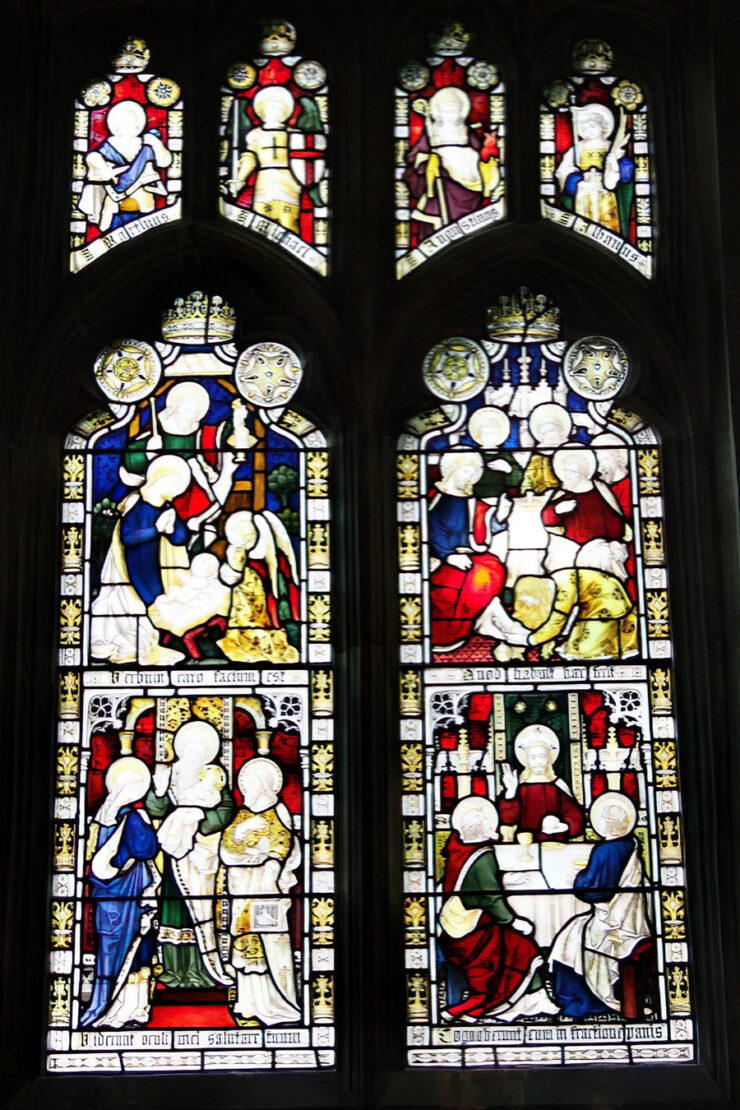
There is one coloured window in the South aisle of the nave, next to the organ. This shows four incidents in the life of Jesus. To the left is a representation of the Nativity of Our Lord with the words, ‘Verbum caro factum est’ (The Word was made flesh) (John 1:14). Also to the left is shown the Presentation of the baby Jesus in the temple. We see Simeon, with Mary and the Holy child. Joseph has two pigeons (Luke 2:24). The words are, ‘Viderunt oculi mei salutare tuum’ (Mine eyes have seen thy salvation – a quotation from the Nunc Dimittis.
To the right is shown the anointing of Jesus’ feet (Mark 148). The inscription reads, ‘Quod habuit haec fecit’ (She did what she could). Finally, there is a picture of the meal which Jesus had with two of his disciples at Emmaus after his resurrection. The words are, ‘Cognoverunt eum in fractionis panis’ (They knew him in the breaking of the bread) (Luke 24:35).
At the top of the window are pictures of St Martin, St Michael, St Augustine and St Alban (so we have two pictures of St Alban in the church as well as two of St George).
The West End
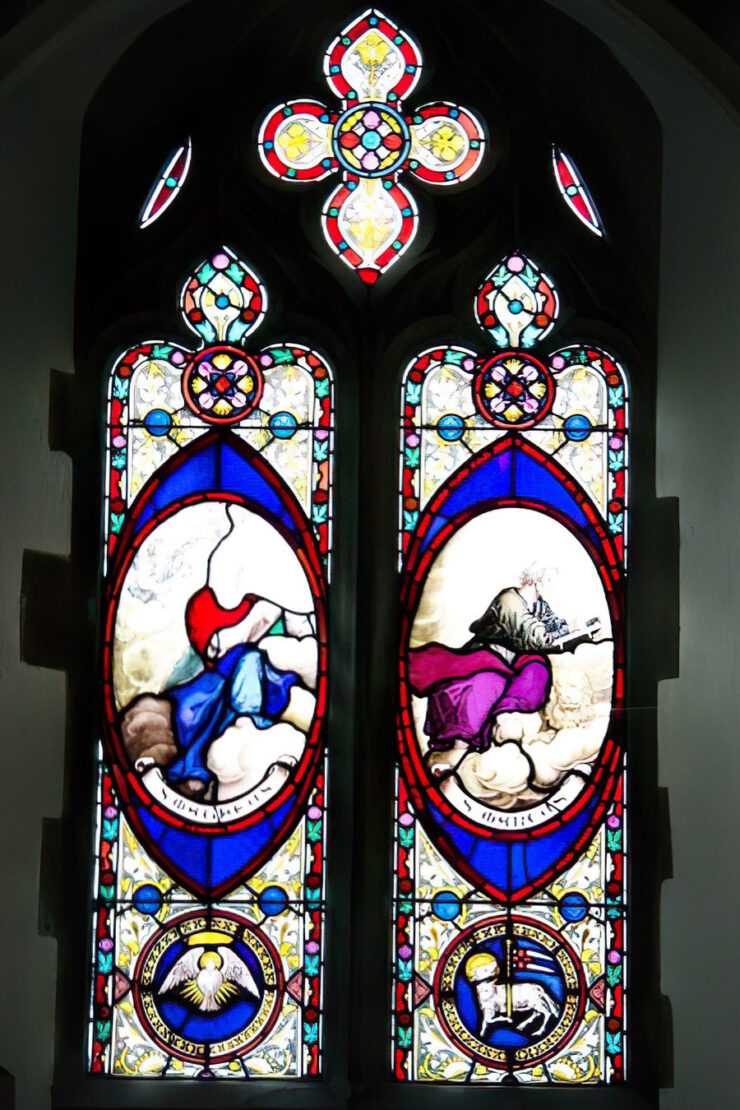
Now we move to the West wall of the church, where there are two stained-glass windows. That on the South side has two lights. On the left is St Matthew, riding on a cloud and writing his gospel: an angel is telling him what to put down. On the right is St Mark, apparently sitting on a lion (the lion is the symbol of St Mark) and writing his gospel. The lion looks rather cross at being used as a writing desk!
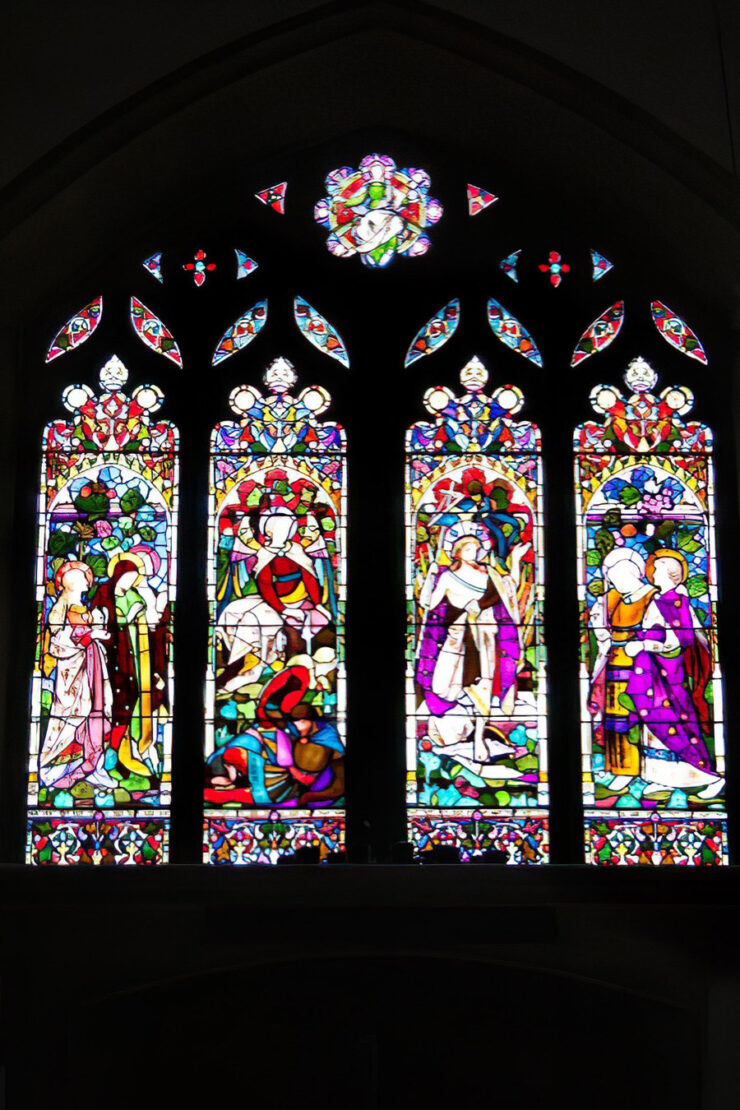
The main West window portrays the Resurrection of Christ. On the left are three women, companions of Jesus, going to the tomb. Next there is a picture of sleeping soldiers and an angel. In the third light is a representation of Christ himself, risen from the dead. In the right-hand light are Peter and John. At the top of the window is a small picture of Christ in majesty.

